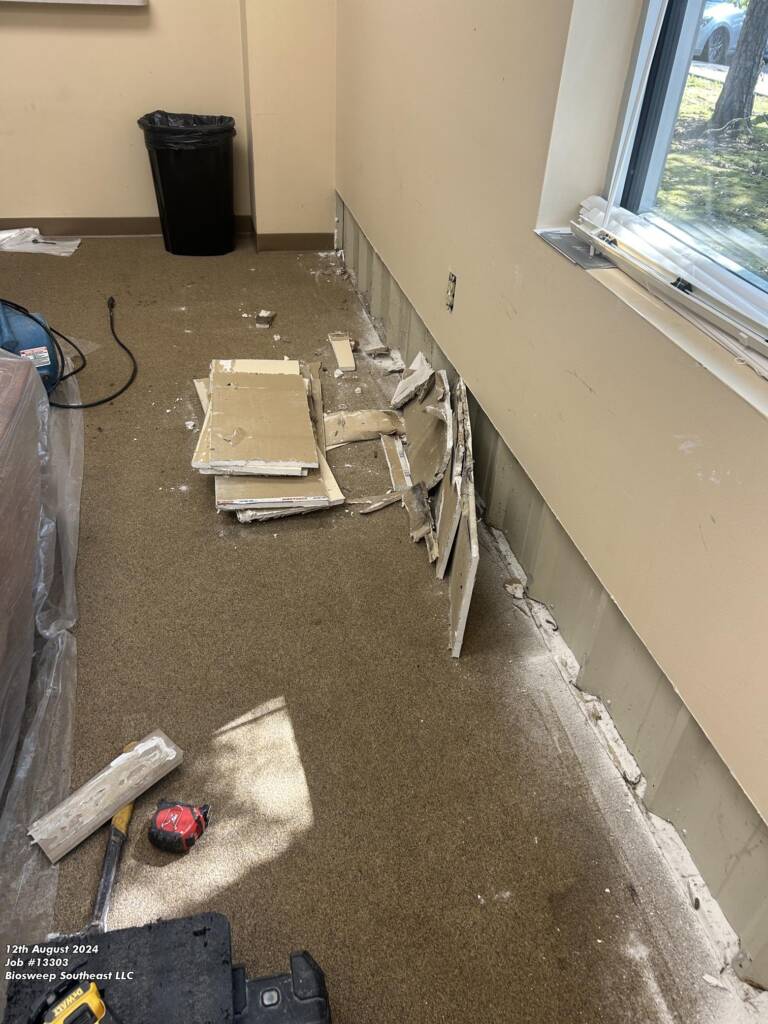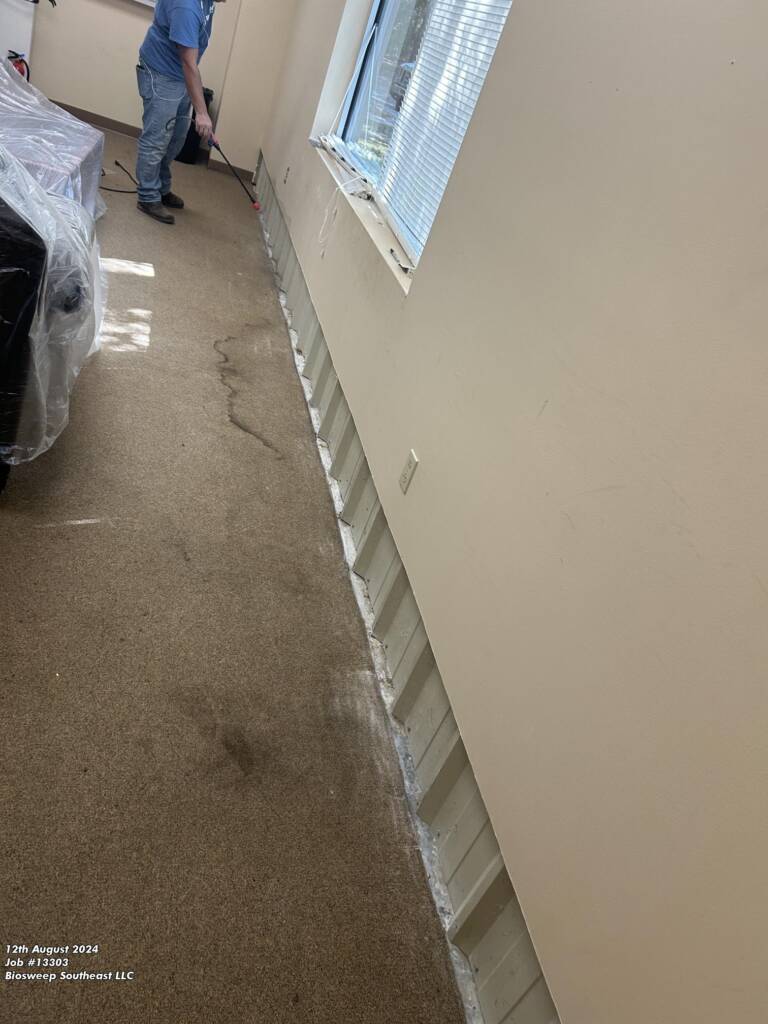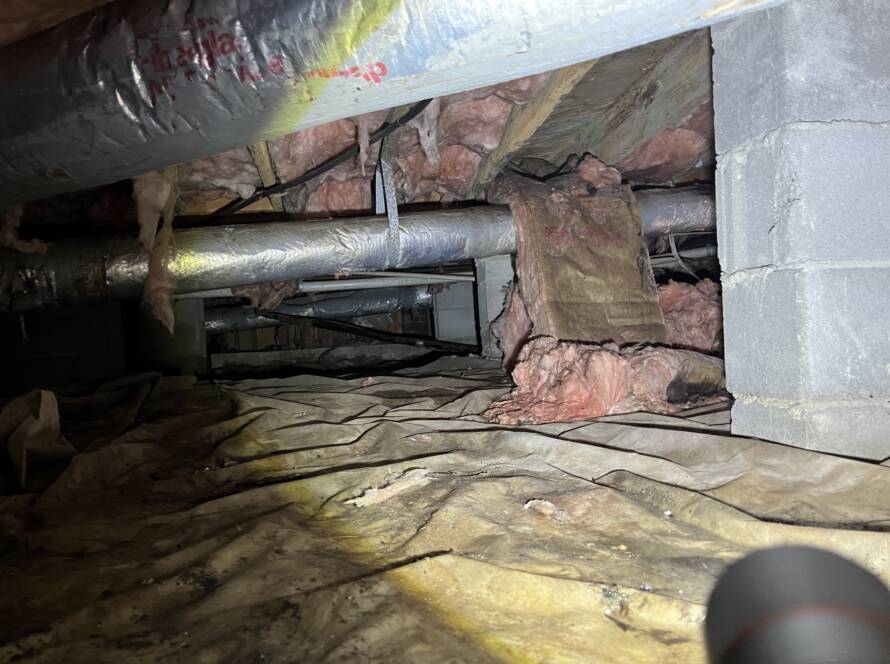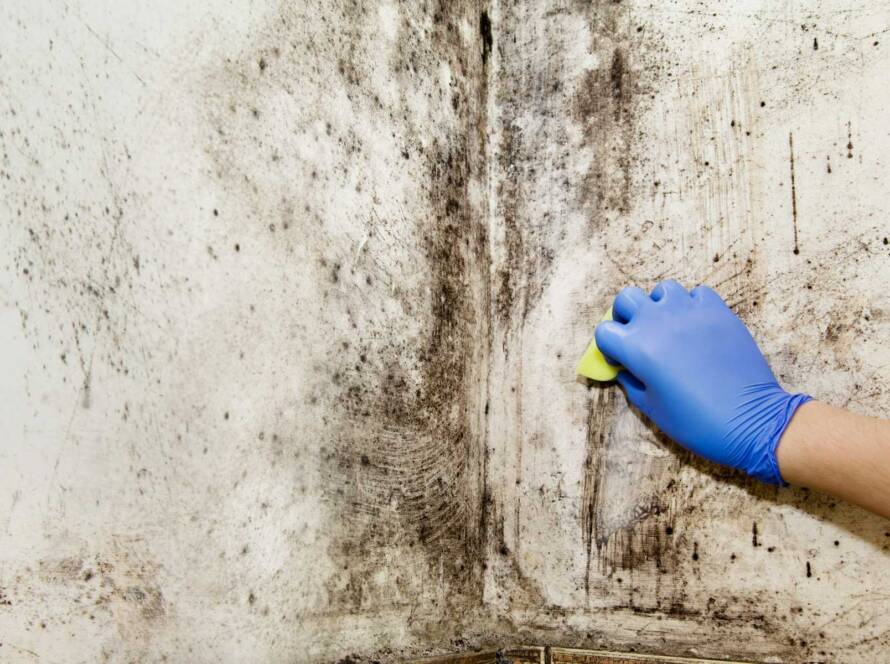When it comes to hidden household hazards, water damage under your flooring ranks high on the list of nightmares no homeowner wants to face. Out of sight and often unnoticed until the problem becomes severe, water beneath hardwood, engineered wood, or laminate flooring can lead to costly structural repairs, mold growth, and permanent damage.
At BIOSWEEP, we’ve seen how quickly undetected moisture can compromise a home. Whether caused by a burst pipe, leaky appliance, or unnoticed seepage, recognizing the early signs of water damage under floor surfaces can save you time, money, and stress. Here’s what you need to know—and how to act fast.
Early Signs of Water Damage Under Flooring

Water damage doesn’t always announce itself with puddles or leaks. Some of the most damaging moisture issues start silently beneath the floorboards. Look for these common indicators:
1. Musty Odors
If a room smells damp or has an earthy, unpleasant odor, it’s often a sign of mold or mildew growing under the floor. Wood is porous and absorbs moisture, providing the perfect breeding ground for bacteria and fungi.
2. Crowning or Cupping Floors
Cupping occurs when the edges of wood floorboards rise higher than the center due to moisture imbalance—typically from water seeping underneath. Crowning, the opposite effect, is when the center of the board bulges upward. Both distortions are key red flags.
3. Discoloration and Stains
Look for dark patches or yellowing spots in hardwood, engineered wood, or laminate. These often indicate water has pooled underneath the surface.
4. Buckling or Warped Boards
When moisture becomes trapped below your flooring, it causes the wood to swell and detach from the subfloor. This buckling can result in raised or uneven boards—a clear sign of severe water infiltration.
5. Loose Nails or Floorboards
When wood absorbs water, it expands, loosening nails or adhesive over time. If your floors start creaking more than usual or individual boards move underfoot, water may be the culprit.
6. Visible Mold Growth
Mold can appear on the surface, but it’s often a symptom of a deeper problem. If you see mold on baseboards, around edges, or near door thresholds, moisture beneath the floor is likely to blame.
How Water Damages Floors from Beneath
Water under your floors doesn’t just stay in one place—it spreads. Hardwood, engineered wood, and even vinyl floors can trap moisture between the planks and the subfloor. This creates an environment where mold flourishes, boards warp, and your floor’s structural integrity is compromised.
The core of many engineered wood floors is not water-resistant. Once saturated, it swells, causing delamination, bubbling, or cracking. If your subfloor is affected, the cost of repairs can escalate quickly—especially if left untreated for more than 24–48 hours.
What To Do If You Suspect Water Damage Under the Floor

Step 1: Identify and Stop the Source
Whether it’s a leaking pipe, a faulty appliance, or heavy rainfall, water intrusion must be stopped before anything else. At BIOSWEEP, we always recommend addressing the source before starting mitigation.
Step 2: Remove Furniture and Wet Materials
Clear the area completely. Wet rugs and furniture retain moisture and can accelerate floor damage. Removing them also allows for a more thorough inspection.
Step 3: Extract Standing Water
Use towels, wet vacuums, or water vacuums to remove as much visible water as possible. If water has seeped between the floorboards, the underlying layers may still be saturated.
Step 4: Thorough Drying Process
Drying is critical—and often overlooked. Use industrial fans, dehumidifiers, and moisture meters to monitor the drying process. Floors must be completely dry to avoid mold growth and long-term damage. BIOSWEEP’s advanced drying systems help speed up this process while preventing microbial contamination.
Step 5: Clean and Sanitize
Depending on the source of the water, additional cleaning may be required. Floodwaters or pipe backups may carry bacteria, requiring disinfection. Cleaning also prepares the area for repairs and refinishing.
Step 6: Inspect for Mold
If moisture has been present for more than 48 hours, mold is likely to follow. We recommend a professional inspection to identify mold growth under the surface. BIOSWEEP technicians are trained to detect and remediate mold safely and effectively using non-invasive detection tools and proven containment strategies.
When to Call a Professional
DIY drying methods can help in minor situations, but if any of the following apply, you should contact a water damage restoration professional:
- The flooring is warped or buckled
- Mold is visible or suspected
- The subfloor is wet or damaged
- You’re unsure how long the water has been present
- The affected area is large or recurring
BIOSWEEP offers full-service water damage restoration, including moisture detection, structural drying, mold remediation, and odor control. We respond quickly because time is everything when it comes to water damage.
How to Prevent Water Damage Under Floors
Once your floors are repaired, it’s time to think about prevention. Here’s how to protect your home from future issues:
- Install rugs and mats in high-risk areas (kitchens, bathrooms, entryways)
- Use leak detectors under sinks and near appliances
- Seal hardwood floors every few years to improve water resistance
- Inspect plumbing and appliances regularly for slow leaks
- Maintain proper indoor humidity (30–50%) using a dehumidifier if necessary
Don’t Wait—Act Fast with BIOSWEEP
If you’ve noticed signs of water damage under your floor, don’t wait until it’s too late. The longer water sits, the more it spreads—leading to costly repairs and serious health risks.
At BIOSWEEP, we specialize in rapid response and lasting results. Our certified team uses cutting-edge technology to detect, extract, and dry water before it becomes a structural or biological hazard. Whether it’s a small spill or major flooding, we’ll restore your floors—and your peace of mind.
Call BIOSWEEP today for a professional water damage assessment


